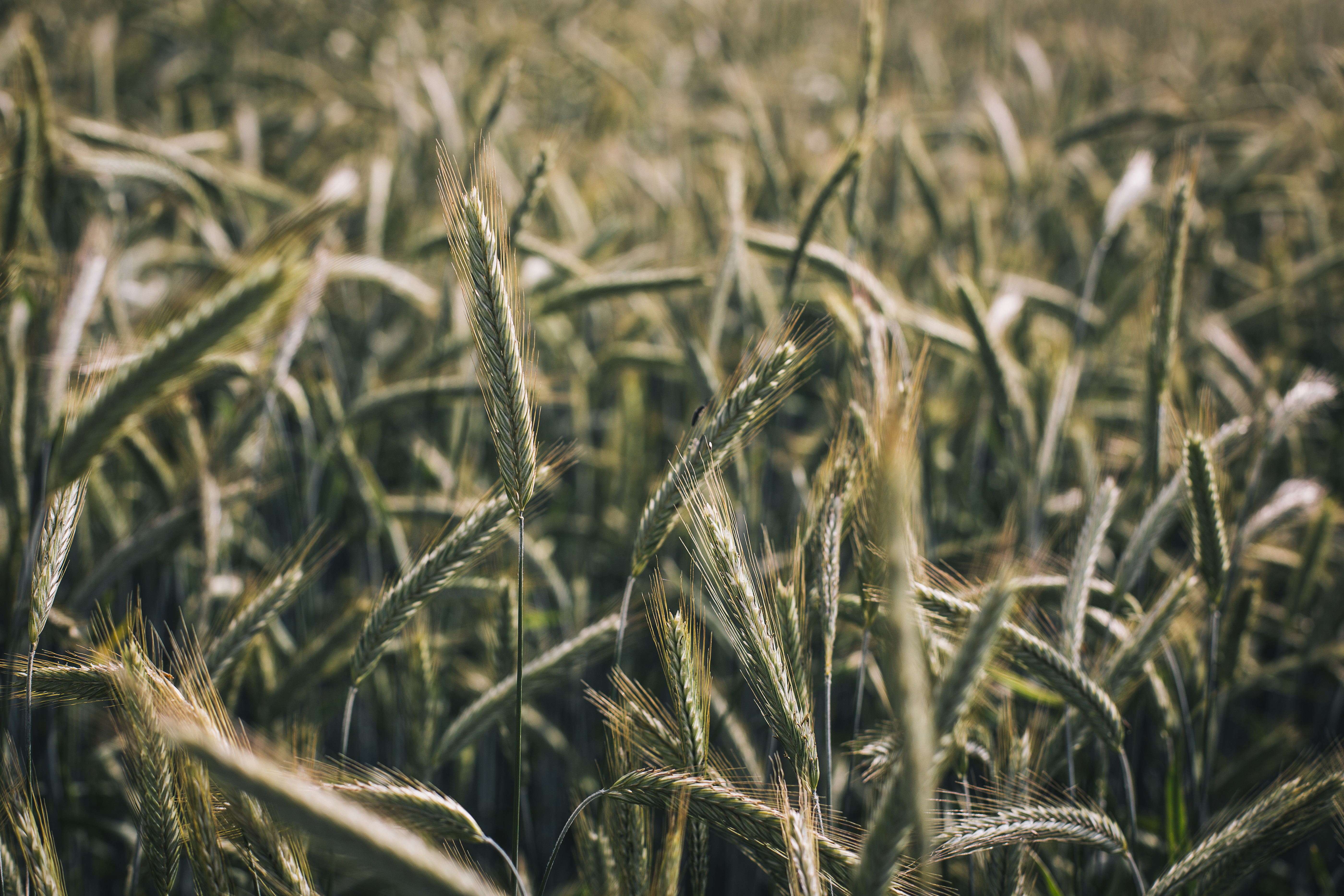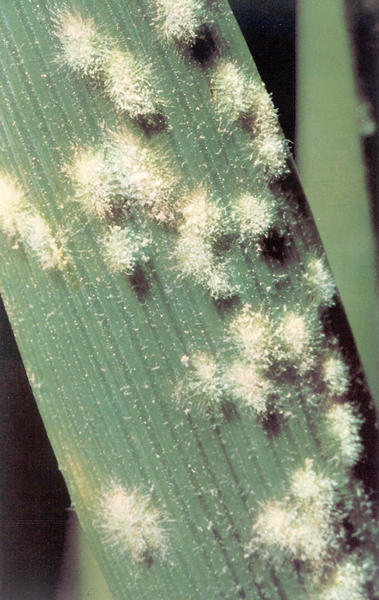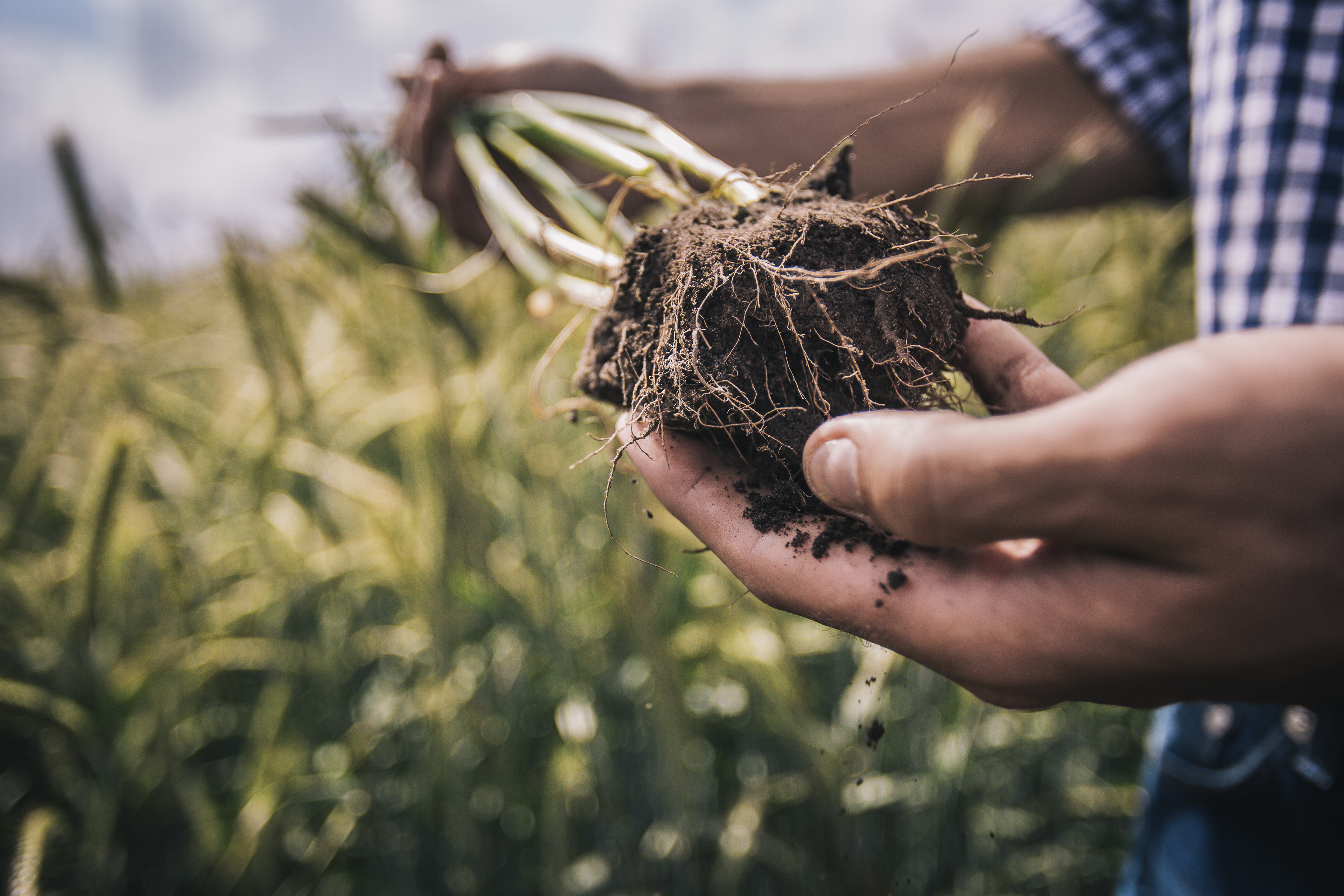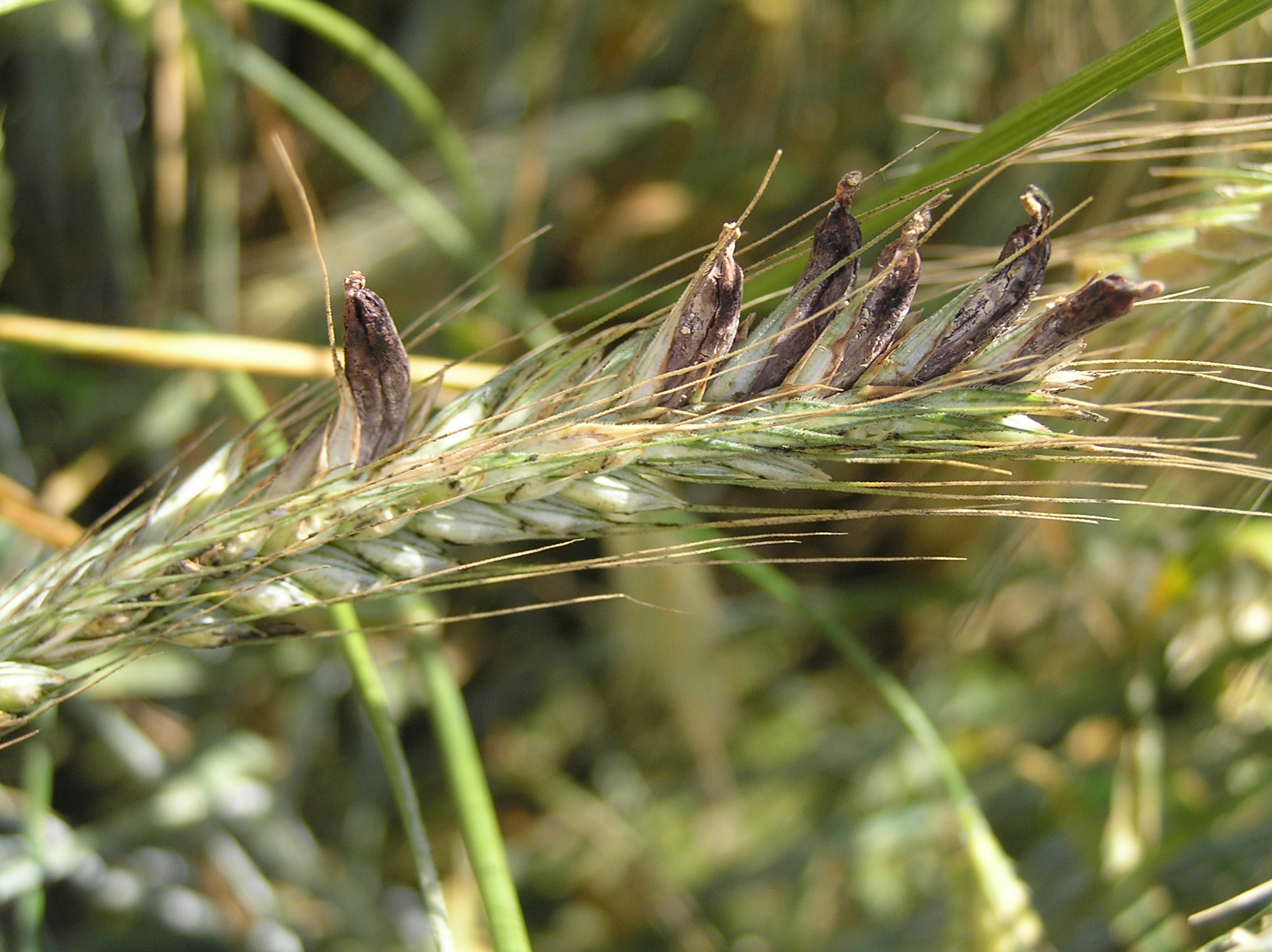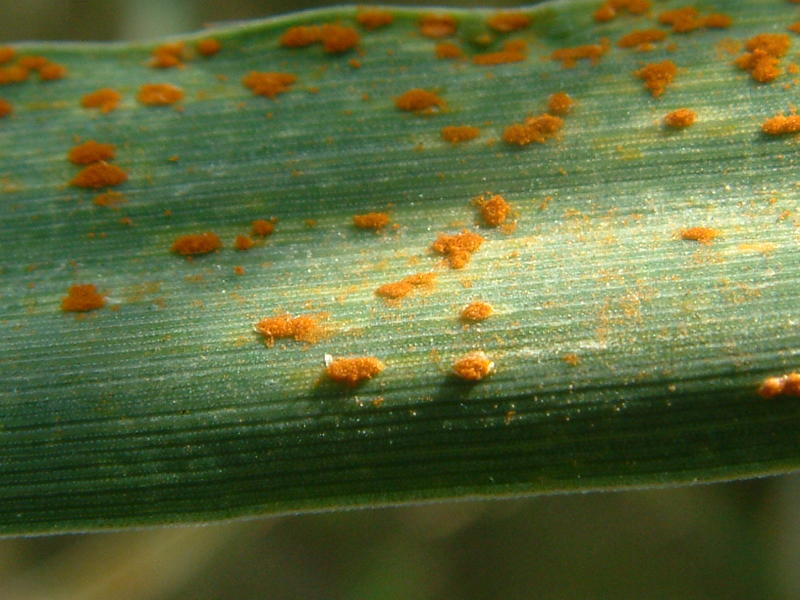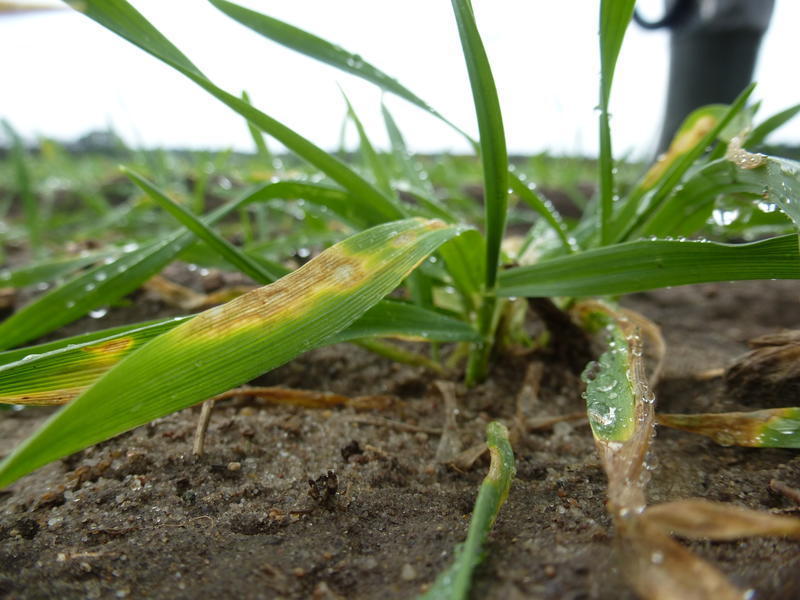Mildew in rye
(Erysiphe graminis f. sp. secalis)
Meaning
Rye is attacked by a special form of mildew - Erysiphe graminis f. sp. secalis . Severe epidemics occur locally and often only in the case of intensive cultivation. Nevertheless, under conditions favouring it, mildew can cause a yield loss of up to 25%.
Main symptoms
On the rye, mildew is usually diagnosed on the leaf blades as whitish and cotton-like mycelium plaques. Later these coverings turn brown with small black cleistothecium.
Powdery mildew (Erysiphe graminis f. sp. secalis) can only infest living leaf tissue. Spreading takes place during the growth period via conidia formed on the upper side of the leaf (up to 6,000/cm2). Temperatures between 18°C and 20°C and high relative humidity (but no rain) are required for heavy sporulation. Then the mildew can multiply explosively. Under unfavourable conditions, however, the infestation can stagnate, since the spores can only survive for a few days. The generation time from the beginning of infestation to the formation of the conidia chains is 80 - 100 degree-days; i.e., at a mean temperature of 15°C, a new generation of spores appears after only 5 days.
Toward the end of the growth period, cleistothecia form on the straw and stubble residues; after a short time these are capable of forming ascospores and infecting the volunteer rye and newly sown winter rye. The fungus overwinters as mycelium on the lower leaf sheaths or as cleistothecia.
Preventive agronomic measures
- Cultivation of resistant varieties
- Avoiding excess N
- Careful working of crop residues (cleistothecia) into the soil and timely removal of volunteer grain in autumn
- Timely and not too early sowing
- Optimise potassium fertilisation

